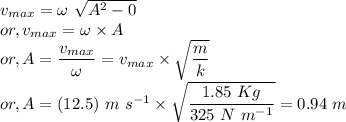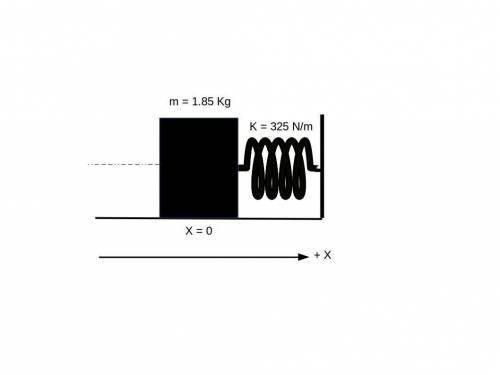
Physics, 10.03.2020 09:05 billy12008
A 1.85 kg frictionless block is attached to an ideal spring with force constant 325 N/m . Initially the spring is neither stretched nor compressed, but the block is moving in the negative direction at 12.5 m/s .Find (a) the amplitude of the motion, (b) the block’s maximum acceleration, and (c) the maximum force the spring exerts on the block.

Answers: 1


Another question on Physics

Physics, 21.06.2019 12:50
"why is graphite used instead of gold or copper wires to conduct electricity in very hot situations such as an industrial kiln? " that's the question, but the thing is, i don't even understand what an "industrial kiln" xd assistance would be < 3
Answers: 2

Physics, 22.06.2019 02:30
Gunpowder residue is most likely to show up where on a shooters hands
Answers: 1

Physics, 22.06.2019 12:40
Estimate the schwarzschild radius (in kilometers) for a mini-black hole formed when a superadvanced civilization decides to punish you (unfairly) by squeezing you until you become so small that you disappear inside your own event horizon. (assume that the your weight is 50 kg)
Answers: 1

Physics, 23.06.2019 06:30
Pl i beg u so much now propane burns in oxygen to produce carbon dioxide and steam. the unbalanced equation for this reaction is: c3h8 + o2 → co2 + h2o use coefficients to balance this equation. a) c3h8 + 3 o2 → 3 co2 + 4 h2o b) c3h8 + o2 → 3 co2 + 4 h2o c) c3h8 + 5 o2 → 3 co2 + 4 h2o d) 2 c3h8 + 5 o2 → 3 co2 + 4 h2o
Answers: 1
You know the right answer?
A 1.85 kg frictionless block is attached to an ideal spring with force constant 325 N/m . Initially...
Questions

Mathematics, 08.04.2021 18:40



Business, 08.04.2021 18:40

Mathematics, 08.04.2021 18:40



History, 08.04.2021 18:40


History, 08.04.2021 18:40


Mathematics, 08.04.2021 18:40

Physics, 08.04.2021 18:40


Mathematics, 08.04.2021 18:40


French, 08.04.2021 18:40



 .
. ) of the block is 1.85 Kg, the force constant (
) of the block is 1.85 Kg, the force constant ( ) is 325
) is 325  .Initially the spring is neither stretched nor compressed, which indicates that the block at this situation is in its equilibrium position where the maximum velocity of the block is
.Initially the spring is neither stretched nor compressed, which indicates that the block at this situation is in its equilibrium position where the maximum velocity of the block is  . If '
. If ' ' be the amplitude of motion, then the velocity of the particle executing simple harmonic motion at any instant of position (
' be the amplitude of motion, then the velocity of the particle executing simple harmonic motion at any instant of position ( ) is
) is
 is the natural angular frequency.
is the natural angular frequency. ), using equation (I) can be written as
), using equation (I) can be written as
 ) of a particle executing SHM is given by
) of a particle executing SHM is given by
 ) of the block is
) of the block is
 ) when it is at a distance
) when it is at a distance  . So, the value of the maximum force is
. So, the value of the maximum force is



